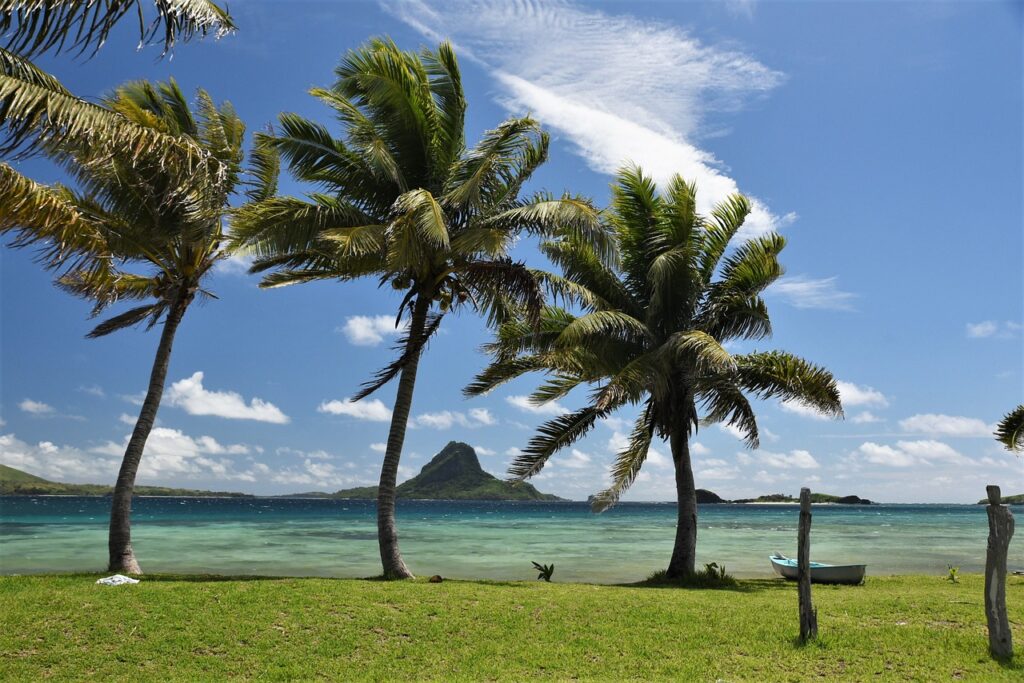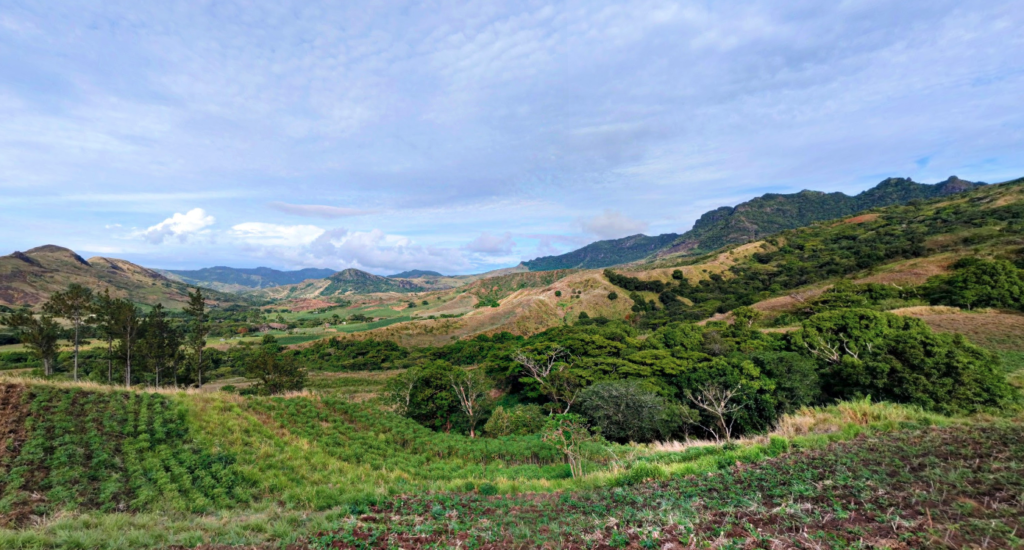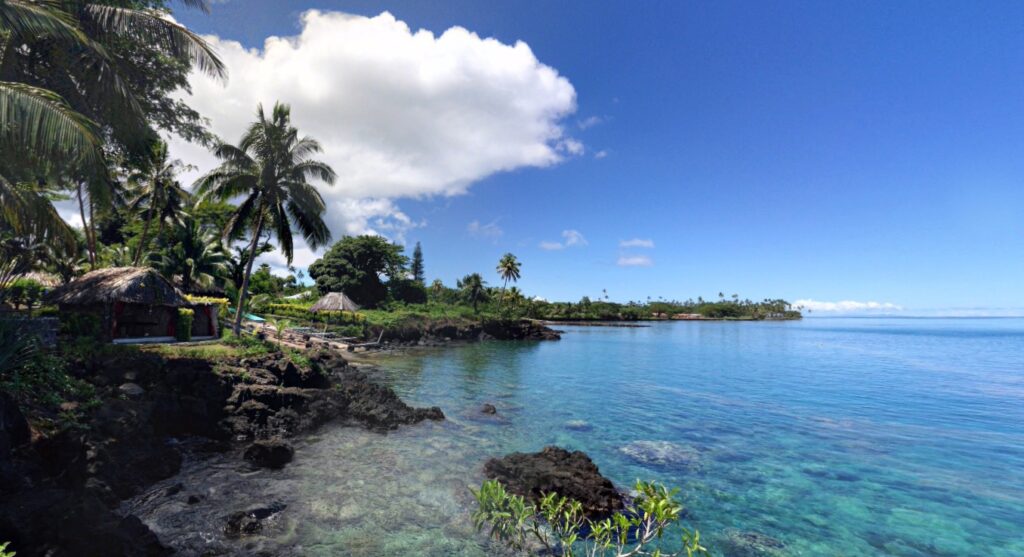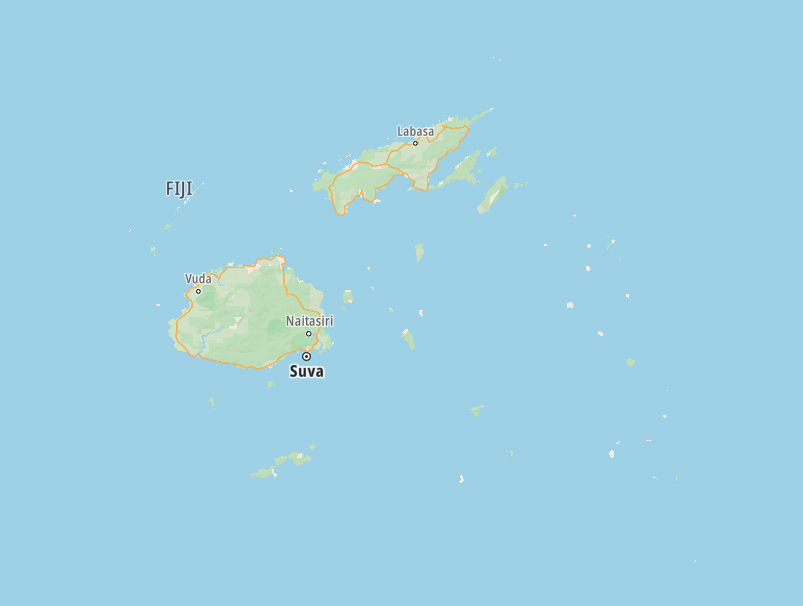Fiji / Matanitu Tugalala o Viti / फ़िजी गणराज्य Fijī Gaṇarājya – Let’s explore here

What’s it like in Fiji?
Fiji is a stunningly beautiful country composed of over 330 islands, about a third of which are lived on permanently. Additionally, there are also over 500 smaller islands! It’s an isolated country – lying about 1,300 miles northeast of New Zealand in the Pacific Ocean. The population is fewer than 1 million and most live on the on the two major islands, Viti Levu and Vanua Levu.
The islands are mountainous, with peaks up to 1,324 metres (4,341 ft), and covered with thick tropical forests. The highest point is Mount Tomanivi on Viti Levu.

A bit about the history of Fiji
Early History and Settlement
Fiji’s history dates back over 3,000 years, with the first inhabitants likely arriving from south east Asia and the Pacific islands. These early settlers formed a society based on agriculture, fishing and clan systems. Over time, Fiji developed into a group of competing chiefdoms, with a rich cultural and religious life.
European Contact and Colonial Era
In 1643, Dutch explorer Abel Tasman was the first European to encounter Fiji. However, it was British explorer Captain James Cook’s visit in 1774 that began significant European interest in the islands. In the 19th century, European missionaries and traders arrived, leading to a period of cultural change and conflict. In 1874, Fiji became a British colony after a period of internal strife among the chiefs. British rule brought infrastructure development, such as roads and railways, but also involved the importation of indentured labourers from India to work on sugar plantations.
Independence and Early Years
Fiji gained its independence from Britain on October 10, 1970, and became a constitutional monarchy under the British Crown, with a parliamentary system. The country faced challenges in integrating its indigenous Fijian and Indo-Fijian populations, who had differing political, social and economic interests.
Coup and Political Instability
In 1987, Fiji experienced its first coup, led by a group of indigenous Fijians who were unhappy with the government’s policies. The coup resulted in the country’s first military led government. Over the next few decades, Fiji experienced further coups, including another in 2000 and another in 2006, which led to a period of military rule.
Democratic Restoration
After years of military led governments and political instability, Fiji began the process of restoring democracy. In 2014, Fiji held its first democratic elections after the 2006 coup. The military backed government, led by Prime Minister Frank Bainimarama, implemented a new constitution and reforms designed to reduce ethnic divisions.
Contemporary Fiji
Fiji remains a stable, developing nation with a growing economy, largely driven by tourism, sugar exports and agriculture. It continues to address issues of ethnic unity, economic inequality and environmental challenges, particularly related to climate change and its vulnerability to rising sea levels. Fiji has become an important player in Pacific regional politics and maintains a focus on sustainability and development in the region.

Fiji road trip
We haven’t finished our planning for our road trip through Fiji yet. When we do though, we’ll post it here, and in the blog.
Hopefully our journey will improve our knowledge of this intriguing and beautiful country, and enable us to meet some interesting people. We’ll be updating this page at that time – don’t forget to check back 🙂
Map of Fiji

What’s it like to drive in Fiji?
They drive on the left hand side of the road in Fiji.
We’ve also created a dedicated page to driving abroad, which you might find helpful 🙂
What currency do they use in Fiji?
In Fiji they use the Fijian dollar. The use of credit / debit cards is now widespread on the two main islands, although you should take cash in more remote areas. Travellers cheques are accepted in tourist areas. There are lots of ATMs on the two main islands, but they’re scarce elsewhere.
You should make yourself aware of the amount that your bank charges you for using credit and debit cards abroad. Often credit cards are cheaper for purchasing items directly, and for withdrawing cash from ATMs.
What language do they speak in Fiji?
They speak English, Fijian and Fijian Hindi in Fiji.
What time zone is Fiji in?
Remember, when you’re planning your next trip to take a look at what time zone it’s in.
Do I need a visa to visit Fiji?
We’ve created a dedicated, more comprehensive page on visas, which you should find helpful. Check it out!
Is wild camping legal in Fiji?
Yes, wild camping is fine in Fiji, although you should avoid national parks and natural reserves.
What plug / socket type do they use in Fiji?

In Fiji they use plug / socket type I.
Health issues in Fiji
Is it safe to drink water in Fiji?
No, it is not safe to drink tap water in Fiji. Bottled water is readily available throughout the country.
What vaccinations are required for Fiji?
This NHS website is kept up to date with all relevant information on vaccinations in Fiji.
Phones in Fiji
What is the country calling code for Fiji?
The country calling code for Fiji is +679
What are the emergency phone numbers in Fiji?
- The emergency number for police in Fiji is: 911 / 917
- In Fiji, the emergency number for ambulance is: 911
- The emergency number for fire in Fiji is: 911 / 910
If you’ve got some useful info that you’d like to share, let us know!
And don’t forget to check out all the other pictures!
